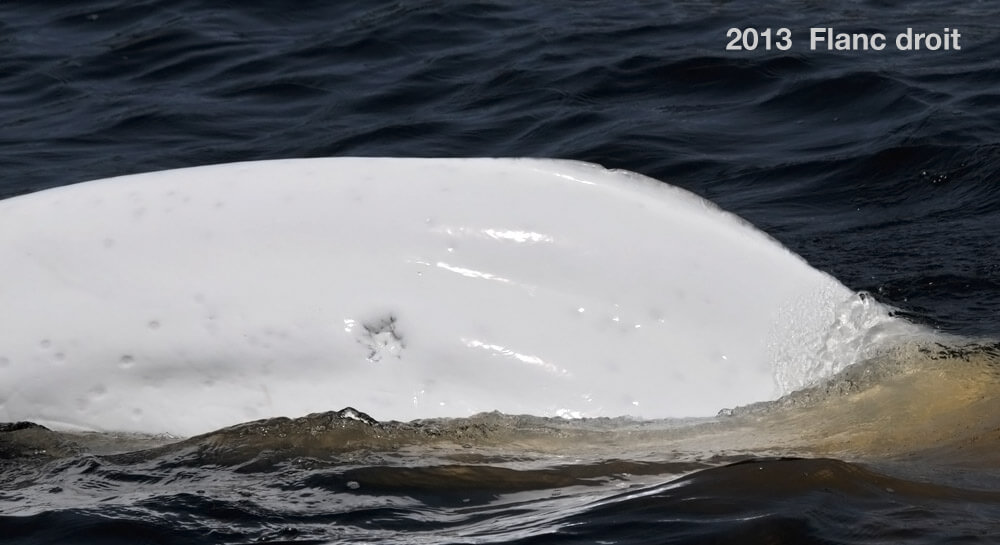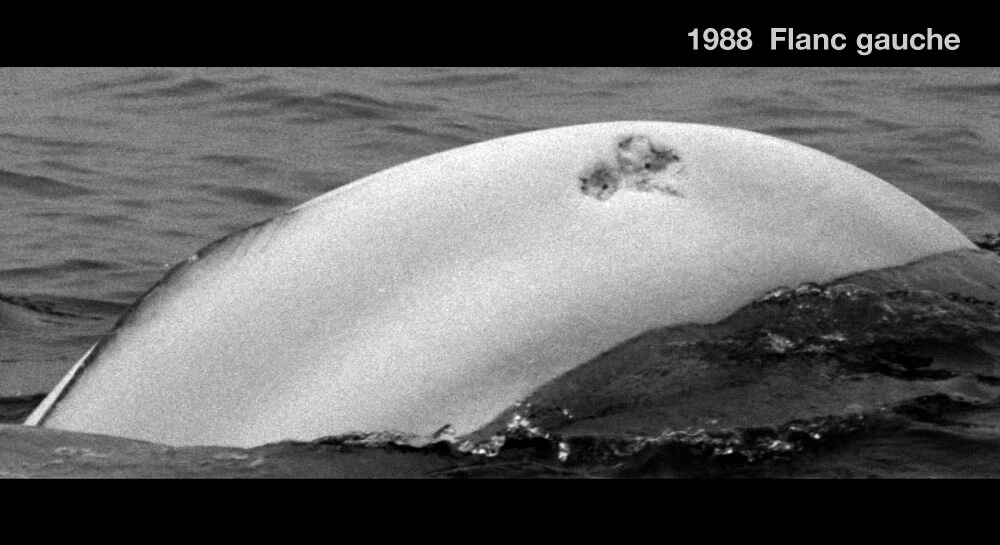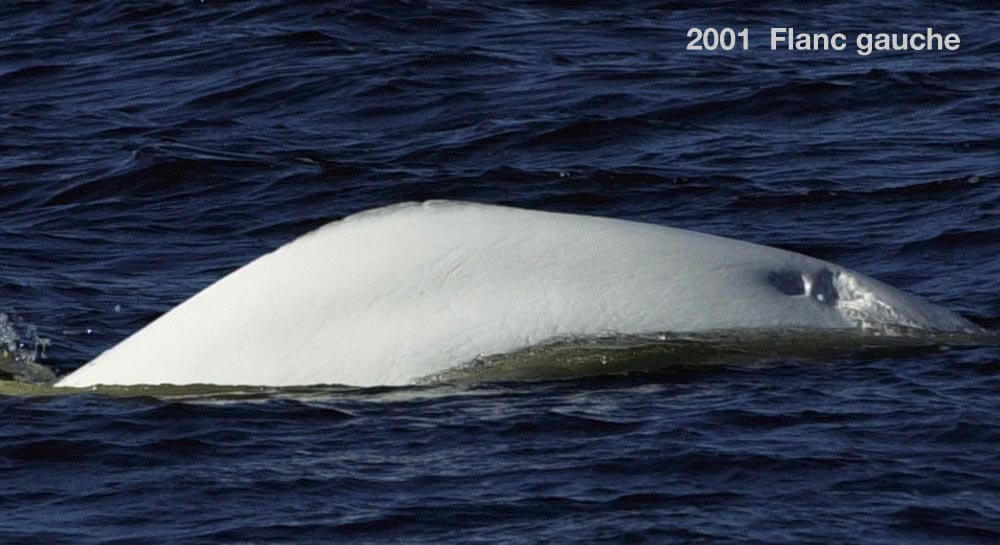Yogi
Beluga


Adopted by Bell Canada
-
ID number
DL0021
-
Sex
Female
-
Year of birth
Before 1970
-
Known Since
1986
Distinctive traits
Yogi owes her name to the deep bear-print scar on her left peduncle. She also has a deep scar on her right side, in the middle of her flank, and her crest also bears some markings.
Life history
We first met Yogi in the summer of 1986. She was already white, so would have been born before 1970.
Yogi is a female. Her sex was confirmed by a biopsy, the genetic analysis of a tiny piece of skin and fat taken from her back. She is part of the Saguenay Fjord community of females.
Yogi has been observed on several occasions with calves. GREMM researchers have taken biopsies from calves accompanying well-known females in an attempt to identify the father. Of course, the father’s DNA must also be in the database. Yogi and one of her youngsters, nicknamed Boubou, were the first to contribute to this filiation search.
Observations history in the Estuary
Years in which the animal was not observed Years in which the animal was observed
Latest news
On the afternoon of October 5, we set off along the Saguenay to meet the belugas. We come across a herd of eight belugas, made up of adults and juveniles. The animals are swimming in all directions, which leads us to believe that they are feeding. We hope it’s going to be a productive hunting session, as one of the adult belugas looks quite skinny. He’s swimming with a younger animal, and they’re making good progress upstream. We soon lose sight of him.
Further on, we observe Yogi, who, true to form, is swimming alone. We’re delighted to see her, as last year she looked skinny, but this time she’s looking good. A few minutes later, to our surprise, Yogi is joined by two adults and three youngsters. Belugas never cease to amaze!
We’re back in the Saguenay Fjord to continue our research project on communication between mothers and newborns. We come across a herd just above the ferries. Among the fifteen or so individuals present, we recognize Yogi. As usual, she swims slightly behind the herd of adults and young. She looks less skinny than last year.
The weather conditions allow us to use our drone. Among other things, this new technology enables us to estimate the composition of groups and the age of youngsters with great precision. At the same time, we “spy” on the animals underwater with our hydrophone to pick up calls between mothers and young. Perhaps we recorded Yogi’s voice that day…
We decide to explore the Saguenay Fjord. Near Anse à la Boule, we come across a dozen animals, adults, youngsters and a calf. From the large scar on her left flank, we easily recognize Yogi, who is swimming among the herd. They are all widely scattered, making it difficult for us to attempt biopsies and take photos. After several attempts, we decide to leave the herd. They were swimming towards Sainte-Marguerite Bay, which is often the final destination of herds travelling up the Saguenay Fjord.
To this day, we still don’t know why belugas are particularly fond of this bay. When they reach the bay, they sometimes stay there for several hours, circling. Socializing behaviors are often observed, and their “voices” are regularly heard, both above and below the water!
Sponsor
Bell Canada adopted Yogi (1988).





